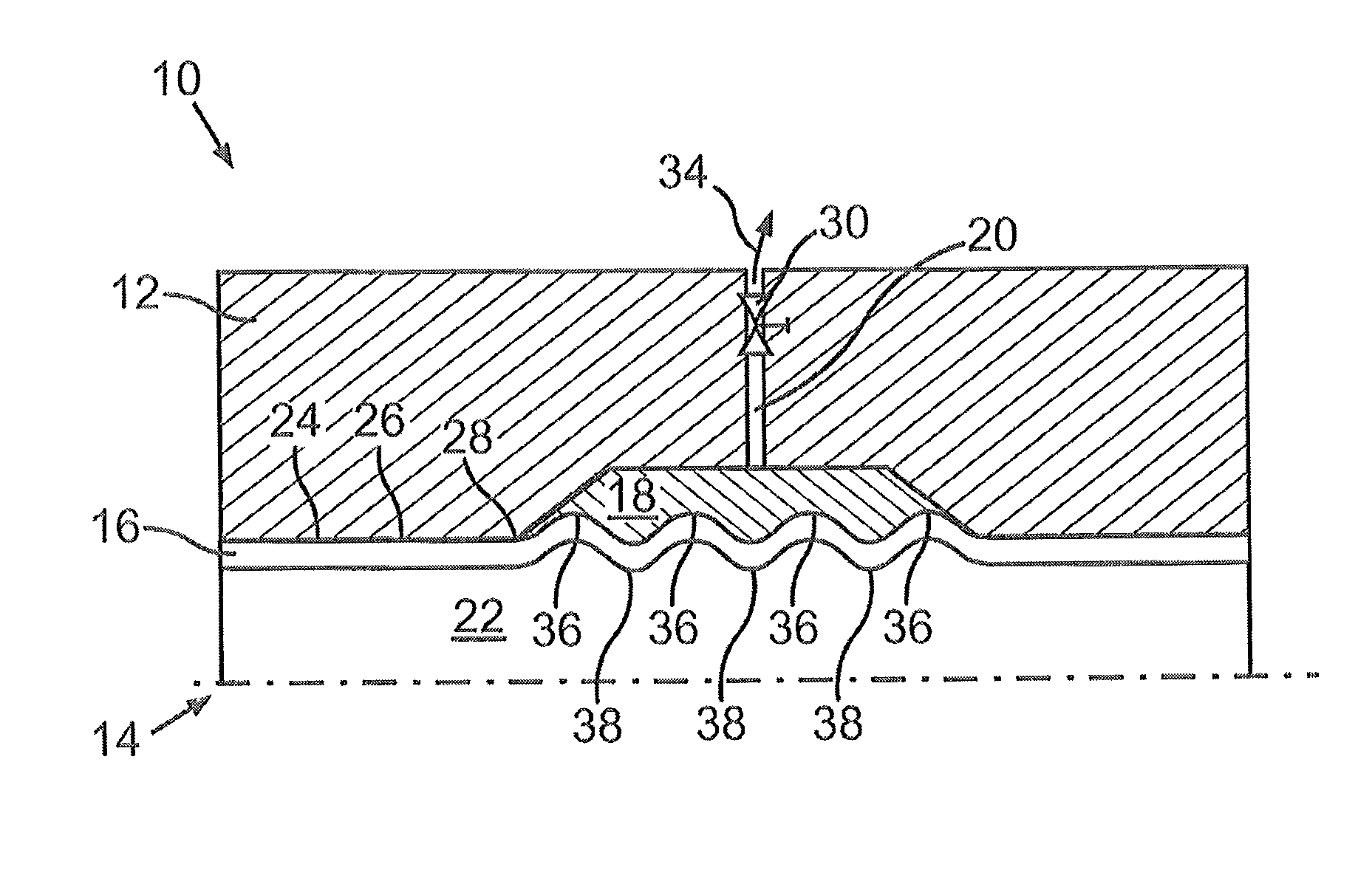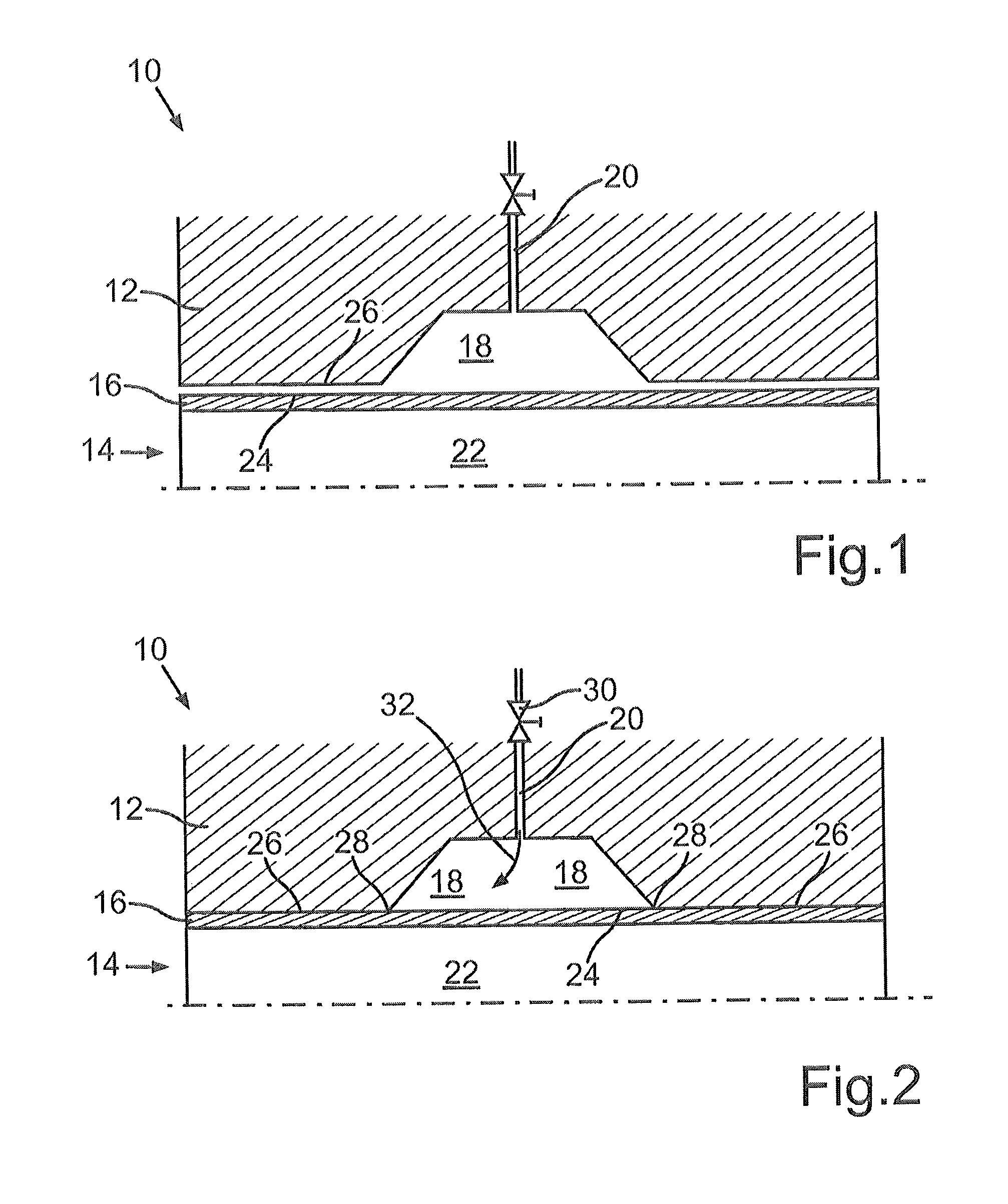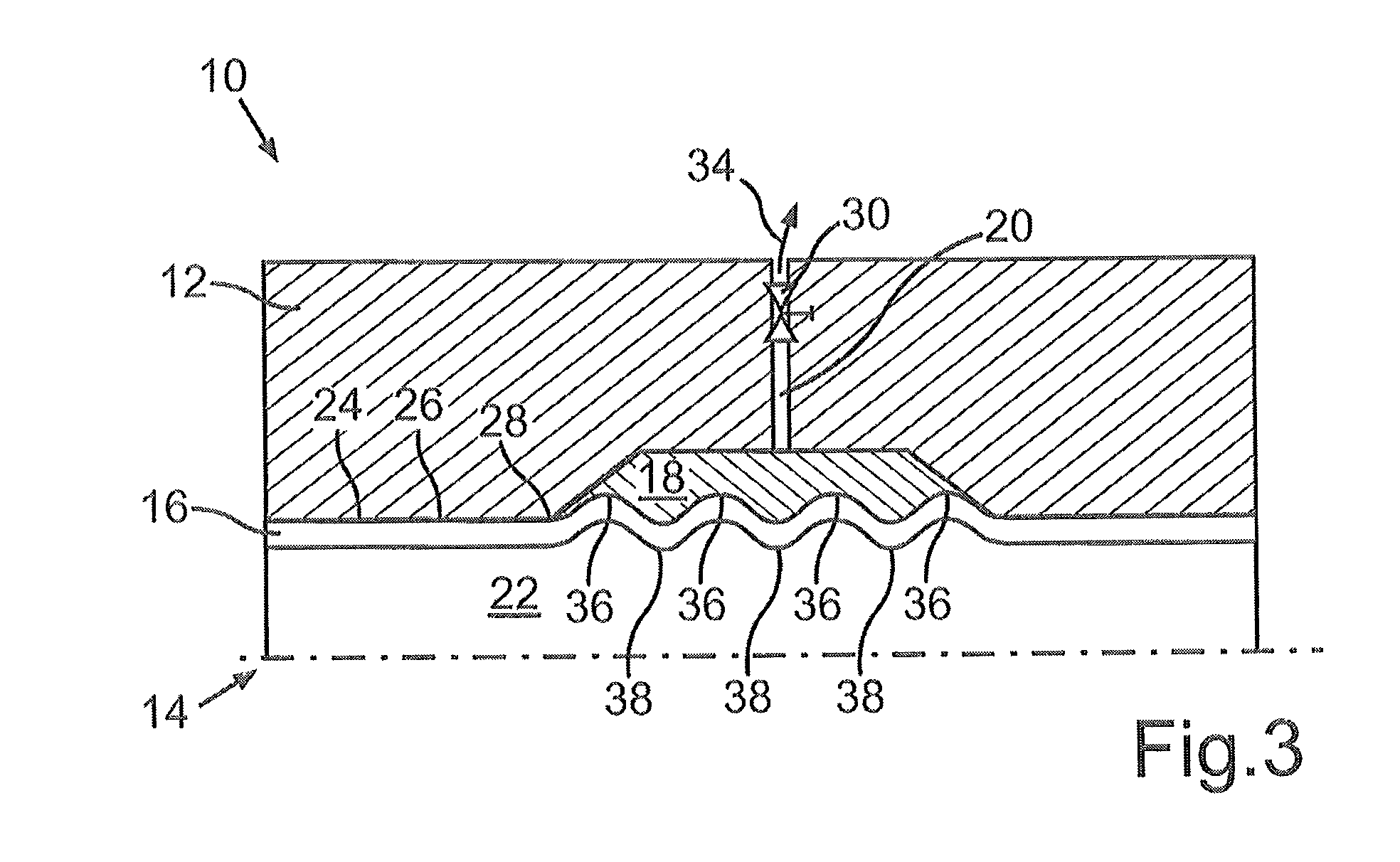Method of producing a composite component
a composite component and manufacturing method technology, applied in lamination, domestic applications, chemistry apparatus and processes, etc., can solve the problems of increasing the flow limit of the hollow section material, inability to produce a positive lock providing sufficient holding, and insufficient fixation of the two components relative to each other, so as to improve the material quality and the adhesion of the composite. , the effect of improving the internal high pressure of the hollow section
- Summary
- Abstract
- Description
- Claims
- Application Information
AI Technical Summary
Benefits of technology
Problems solved by technology
Method used
Image
Examples
Embodiment Construction
[0018]A combined injection molding and hydroforming mold, referenced 10 overall, of which one half of the mold partial region 12 is illustrated in FIG. 1, comprises a central cavity 14 for receiving a hollow section 16 and also a sprue cavity 18 into which an injection molding compound, in particular a plastics material, can be fed through a sprue line 20.
[0019]FIG. 1 shows the mold 10 with the hollow section 16 prior to carrying out the method. To produce the composite component, initially the inner void 22 of the hollow section 16 is acted upon by a pressure, which expands the hollow section 16, until the outer wall 24 thereof comes to lie against the wall 26 of the cavity 14 of the mold 10, and optionally also expands slightly into the mold region 18.
[0020]In particular, this, as can be seen in FIG. 2, brings the edge region 28 of the sprue cavity 18 into contact with the outer wall 24 of the hollow section 16. As soon as the outer wall 24 has come to lie against the edge region ...
PUM
| Property | Measurement | Unit |
|---|---|---|
| temperature | aaaaa | aaaaa |
| temperature | aaaaa | aaaaa |
| temperature | aaaaa | aaaaa |
Abstract
Description
Claims
Application Information
 Login to View More
Login to View More - R&D
- Intellectual Property
- Life Sciences
- Materials
- Tech Scout
- Unparalleled Data Quality
- Higher Quality Content
- 60% Fewer Hallucinations
Browse by: Latest US Patents, China's latest patents, Technical Efficacy Thesaurus, Application Domain, Technology Topic, Popular Technical Reports.
© 2025 PatSnap. All rights reserved.Legal|Privacy policy|Modern Slavery Act Transparency Statement|Sitemap|About US| Contact US: help@patsnap.com



